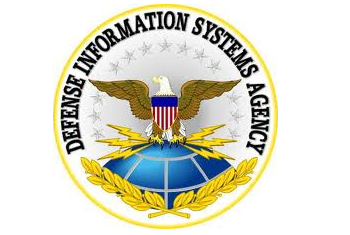 On Jan. 24, the Defense Information Systems Agency (DISA) Vice Director, Naval RADM David G. Simpson, spoke at the AFCEA Central Maryland Luncheon. He discussed the benefits of collocation with NSA and USCYBERCOM at Fort Meade, a look at DoD’s readiness, and focused on the Joint Information Environment, the future of DoD information technology.
On Jan. 24, the Defense Information Systems Agency (DISA) Vice Director, Naval RADM David G. Simpson, spoke at the AFCEA Central Maryland Luncheon. He discussed the benefits of collocation with NSA and USCYBERCOM at Fort Meade, a look at DoD’s readiness, and focused on the Joint Information Environment, the future of DoD information technology.
 On Jan. 24, the Defense Information Systems Agency (DISA) Vice Director, Naval RADM David G. Simpson, spoke at the AFCEA Central Maryland Luncheon. He discussed the benefits of collocation with NSA and USCYBERCOM at Fort Meade, a look at DoD’s readiness, and focused on the Joint Information Environment, the future of DoD information technology.
On Jan. 24, the Defense Information Systems Agency (DISA) Vice Director, Naval RADM David G. Simpson, spoke at the AFCEA Central Maryland Luncheon. He discussed the benefits of collocation with NSA and USCYBERCOM at Fort Meade, a look at DoD’s readiness, and focused on the Joint Information Environment, the future of DoD information technology.
The Joint Information Environment has been signed off on by the top levels of the DoD hierarchy. According to RADM Simpson, “[The JIE] is not a program of record or a joint program office. It is an organization of alignment across the department around shared IT infrastructure, enterprise services, and a single security architecture that is designed from the very beginning around the information sharing that needs to occur across the department.”
The JIE has be designated a “military imperative,” it will have to happen and be supported by military leadership. The organization of the JIE is varied, ”tri-chaired by the DoD CIO, Teri Takai; Joint Staff J6, Army LTG Mark Bowman; and CYBERCOM commander, Army GEN Keith Alexander, who also serves as the initiative’s operational sponsor.”
“In execution, there are three lines of operation: governance, operations, and technical synchronization. DISA has been given responsibility for the technical aspects of JIE and leads the JIE Technical Synchronization Office (JTSO), which includes agency staff, as well as representation from the military services, intelligence community, and National Guard.”
Capabilities such as the JIE are key to our national security paradigm. They offer true communication and sharing capabilities that leverage technology (instead of being hampered by it). This program will not come out of new funding, rather it will rely on evolving the DoD infrastructure (including the legacy systems). Synchronization will be key, as will be open communication at all levels of the integration. Time will tell what JIE will do to DoD enterprise information technology, but it is a good example of the work that can, and needs to be done.





